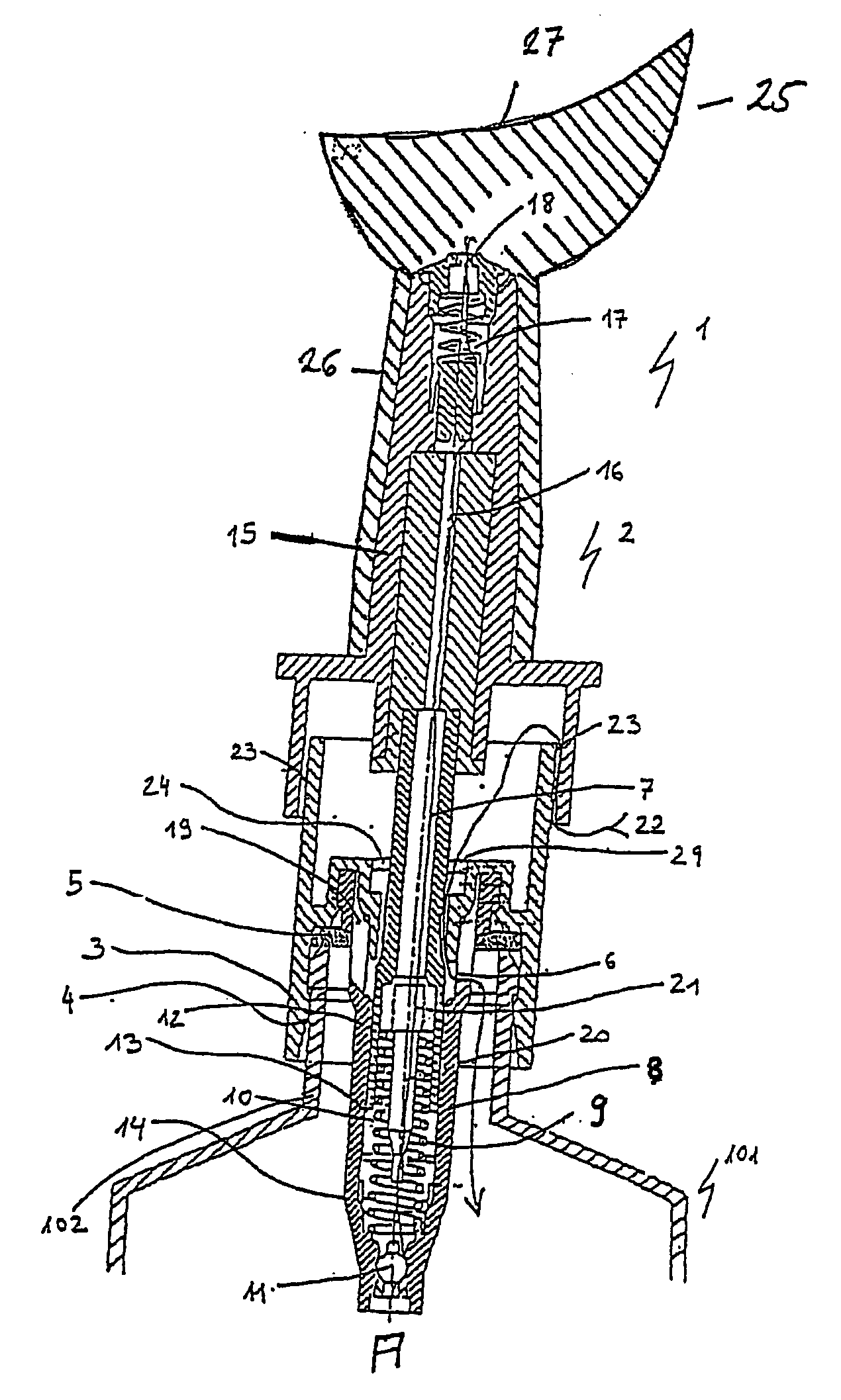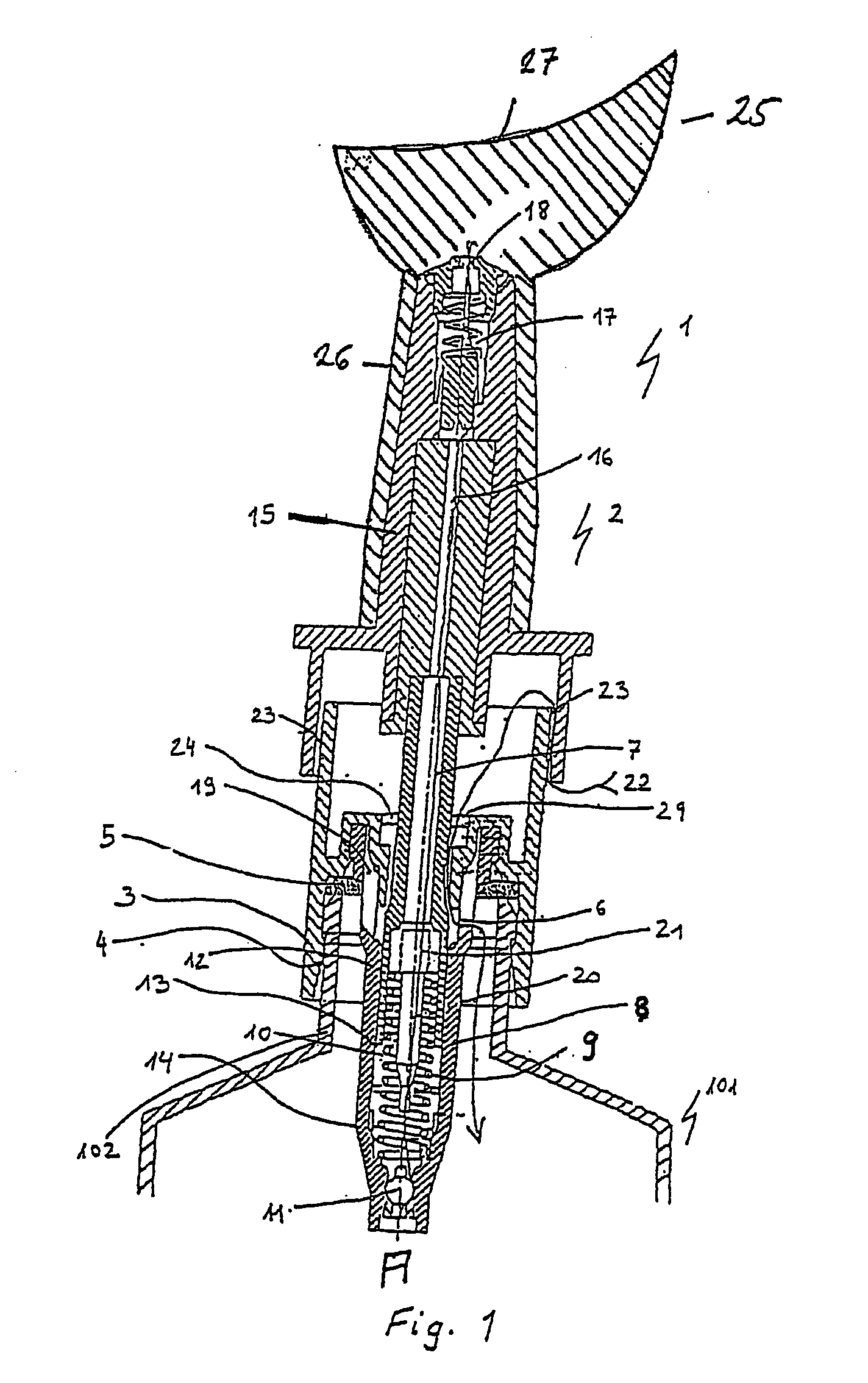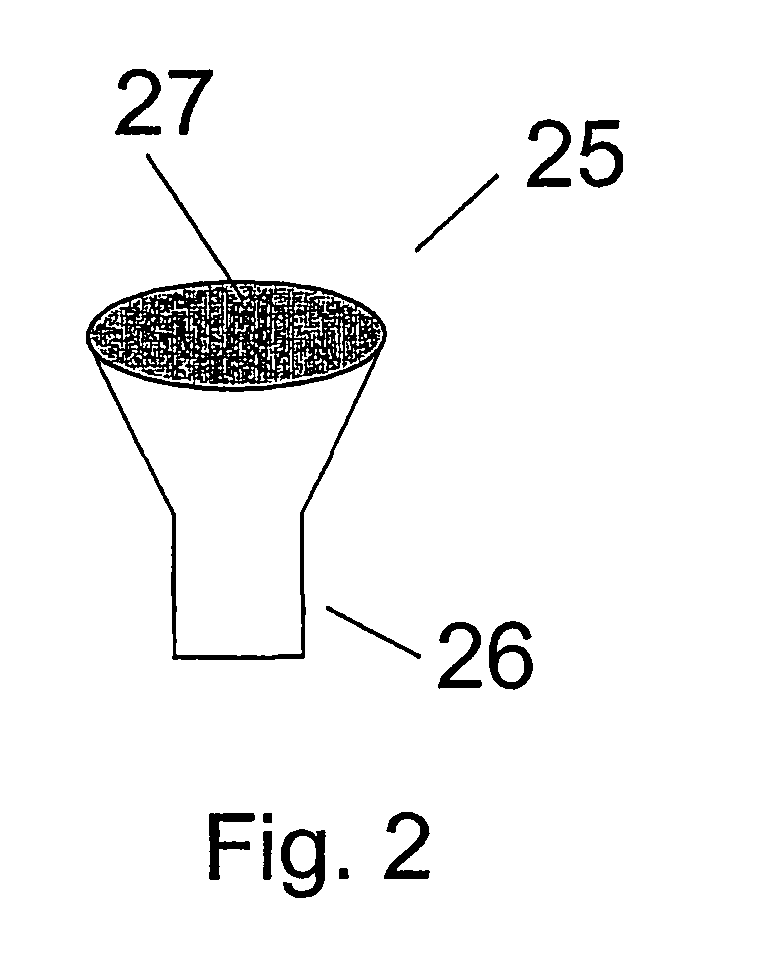Nebulizer for applying liquids on the surface of the eye or the ocular connective tissue
a liquid nebulizer and eye technology, applied in the field of nebulizers, can solve the problems of not all patients finding it easy to administer liquid drops into their own eyes, children and elderly people in particular, and patients will accidentally stick the applicator
- Summary
- Abstract
- Description
- Claims
- Application Information
AI Technical Summary
Benefits of technology
Problems solved by technology
Method used
Image
Examples
Embodiment Construction
[0014] Thus, the problem on which the present invention is based is to apply aqueous solutions or ophthalmologically effective formulations to the surface of the eye in such a way as to reduce the local irritation of one area of the cornea compared with conventional methods of applying eye drops.
[0015] Another problem is to develop a process with which eye drops can be administered in a manner which is more pleasant for the user than is known from the prior art.
[0016] Another problem is to develop a process in which the liquid to be administered can be applied uniformly over the eye.
[0017] Yet another objective is to minimise the risk of injury to the eye during application of the eye drops.
[0018] A further objective is to provide an applicator for ophthalmological liquids wherein there is no need to use preservatives such as EDTA or benzalkonium chloride in the solution for application.
[0019] The present invention solves this problem by providing atomizers which convert the formula...
PUM
 Login to View More
Login to View More Abstract
Description
Claims
Application Information
 Login to View More
Login to View More - R&D
- Intellectual Property
- Life Sciences
- Materials
- Tech Scout
- Unparalleled Data Quality
- Higher Quality Content
- 60% Fewer Hallucinations
Browse by: Latest US Patents, China's latest patents, Technical Efficacy Thesaurus, Application Domain, Technology Topic, Popular Technical Reports.
© 2025 PatSnap. All rights reserved.Legal|Privacy policy|Modern Slavery Act Transparency Statement|Sitemap|About US| Contact US: help@patsnap.com



